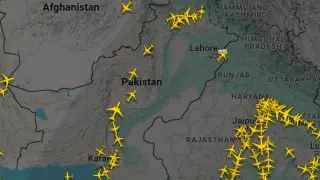
X/vijaygajera
New Delhi: In a significant move, the Reserve Bank of India (RBI) repatriated 100 metric tonnes of its gold reserves from the UK to domestic vaults during FY24. This marks one of the largest repatriations of gold since 1991, when India pledged a portion of its reserves to overcome a foreign exchange crisis. Here is a disintegration of all the facts regarding the control of gold prices in the market.
Surprisingly, this is not the London city you're familiar with. It's an entirely different entity! Did you know the Bank of England operates from a 'private' city' known as the 'The City of London'? This is not the capital of the United Kingdoms but a completely different city.
In 1824/25, Rothschild gained control of the Bank of England by supplying gold during a financial crisis. The Rothschild family had a monopoly in gold mining and were influential in setting global gold prices from their office.
The Bank of England is located in the 'City of London,' a unique jurisdiction with its own police, laws, and court system. The Bank of England’s vaults store gold for 30 central banks worldwide, including India’s Reserve Bank of India (RBI).
Alfred de Rothschild, a member of the influential Rothschild family and a director of the Bank of England for 20 years, envisioned a central bank for India backed by the gold standard. In 1921, the Imperial Bank of India was established following Rothschild's plan, influenced by economist John Maynard Keynes. This bank was a private entity with notable shareholders, including Tata and other Parsi businessmen. Tatas were involved in various businesses, including opium trade and banking with institutions like HSBC.
In 1913, the Federal Reserve was established in the USA as a privately owned central bank by Rothschild, Morgan, and Rockefeller. The Tata Group had connections with Rockefeller and Morgan, evident through collaborations like the one between Tata’s Central Bank of India and Chase Manhattan Bank. In 1935, the Reserve Bank of India (RBI) was established as a private bank, with Osborne Arkell Smith, former Governor of the Imperial Bank of India, as its first governor.
In 1944, the Bretton Woods Conference, organized by John Maynard Keynes, created the IMF and the World Bank. The Indian delegation included Jeremy Raisman, Ardeshir Darabshaw Shroff, C. D. Deshmukh, and R. K. Shanmukham Chetty. These figures were influential in shaping India’s financial policies. Keynes and Raisman’s economic strategies, including creating ‘profit inflation’ during World War II, led to significant inflation and the tragic Bengal famine of 1943.
Post-independence, figures like JRD Tata and former Prime Minister Manmohan Singh played pivotal roles in India’s financial landscape. Singh, a member of NCAER and later RBI governor, worked closely with the IMF. His appointment of Raghuram Rajan as RBI governor further exemplifies the intertwined global financial influences on India.
In 2007, the City of London established the Advisory Council for India, including influential members like Mukesh Ambani, Deepak Parekh of HDFC, and Naina Lal Kidwai. Kidwai, a senior advisor at Rothschild India and a former head of Morgan Stanley India, facilitated significant financial transactions, including funding Infosys during its IPO.
The IMF and World Bank lend money to governments for infrastructure projects, but the same global financial network also funds NGOs that sometimes oppose these projects, creating delays and increasing financial burdens. This debt trap forces governments to impose higher taxes on their citizens.
O.P. Bhatt, former chairman of SBI, now serves on boards of major companies like ONGC, Tata Steel, Hindustan Unilever, and TCS. His involvement in investigating Adani on the Hindenburg report showcases the continued influence of prominent figures in shaping India’s financial sector.













Copyright © 2025 Top Indian News
